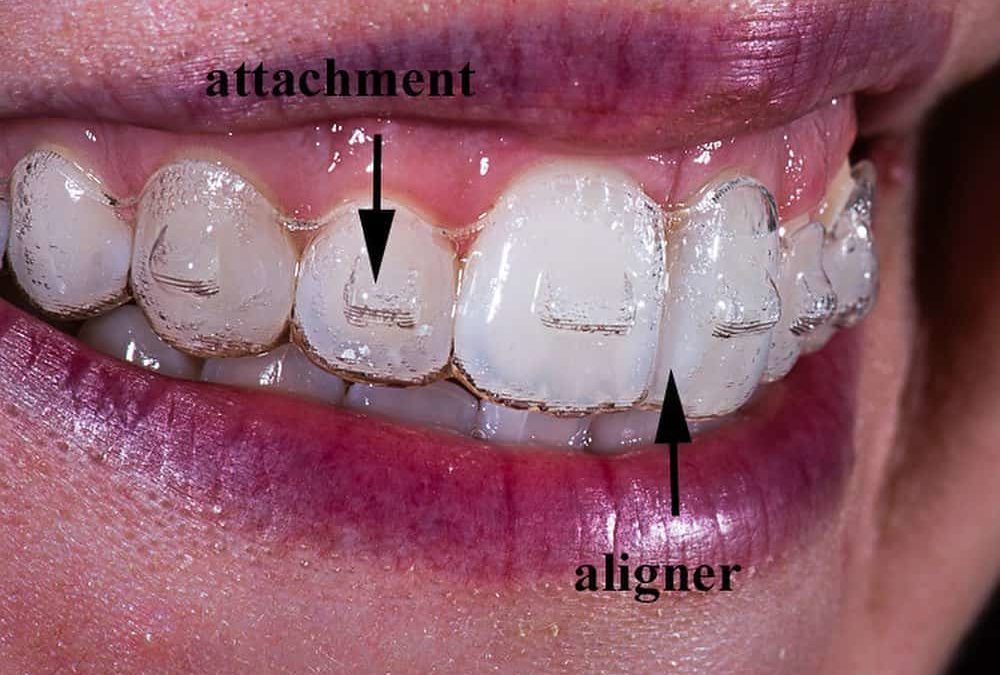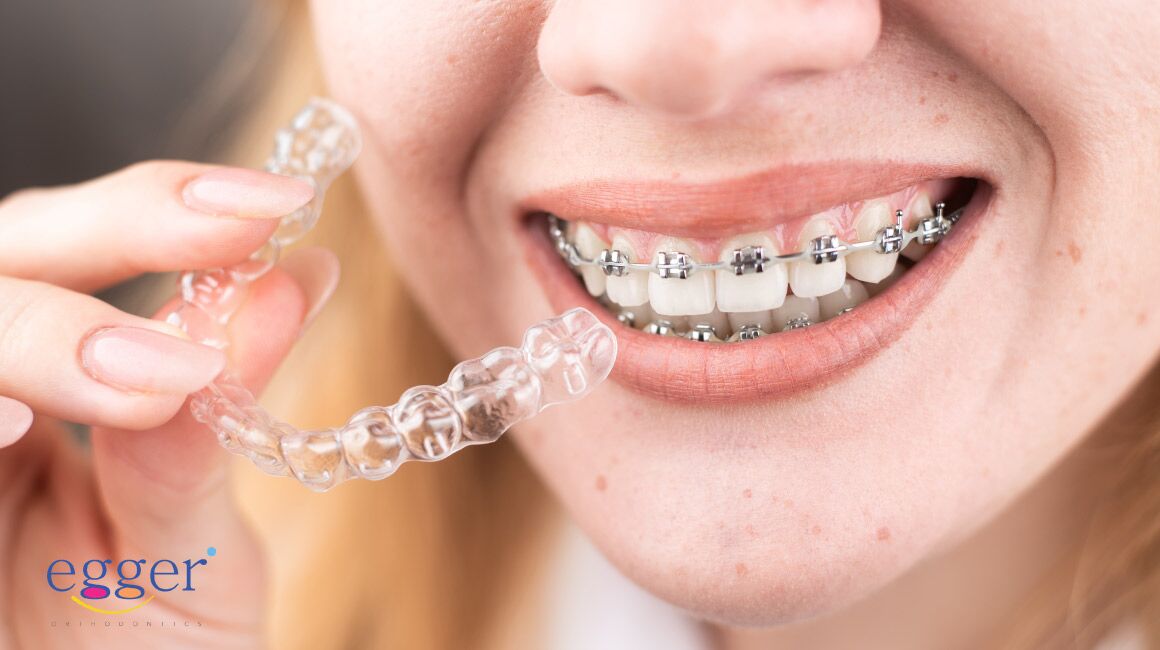Invisalign for Teens: A Modern Solution to Straightening Young Smiles
Invisalign for Teens: A Modern Solution to Straightening Young Smiles
Blog Article
Invisalign vs. Traditional Braces: Which Alternative Is Right for You?
When thinking about orthodontic therapy, the option in between Invisalign and conventional braces presents a number of vital factors that warrant cautious assessment. Invisalign uses a discreet choice with removable aligners, while conventional dental braces offer a much more noticeable yet efficient service for severe imbalance. Each option incorporates distinct benefits and downsides connected to visual appeals, comfort, treatment period, and expense. Understanding these subtleties is important for making an educated choice that lines up with your personal preferences and way of life. The concern continues to be: which choice will finest fulfill your orthodontic needs and assumptions?
Introduction of Therapy Choices

On the other hand, traditional braces consist of metal brackets and cables that are adhered to the teeth. This method uses continuous pressure in time to achieve placement. While effective for intricate orthodontic problems, typical braces require normal brows through for adjustments and can posture challenges in maintaining dental health due to the trouble of cleansing about cables and braces.
Both alternatives have their merits, and the choice usually rests on details dental conditions, way of living choices, and individual compliance. Ultimately, seeking advice from an orthodontic expert is critical for figuring out the most suitable treatment plan tailored to specific needs. Understanding the subtleties of each choice can dramatically influence the general success of orthodontic treatment.
Aesthetic Factors To Consider
A significant element affecting the choice in between Invisalign and standard dental braces is the aesthetic allure each treatment uses. Invisalign aligners are crafted from clear plastic, making them virtually unnoticeable when used. This very discreet look is specifically interesting teens and grownups that might really feel uneasy concerning their orthodontic therapy. The ability to preserve an all-natural smile throughout the positioning process can substantially enhance the individual's confidence in expert and social settings.
In contrast, conventional dental braces include steel braces and wires, which can be more noticeable. While improvements in orthodontic innovation have actually caused the growth of smaller sized braces and colored elastics, typical dental braces still preserve an even more conspicuous account. For some people, the visibility of braces might hinder them from looking for essential treatment.
Inevitably, the option between Invisalign and standard dental braces may rest on individual choices pertaining to visual appeals. Clients that focus on discretion usually favor Invisalign, while those that are less concerned about exposure may choose for conventional dental braces. Recognizing the aesthetic ramifications of each alternative is critical for making a notified choice that lines up with one's way of life and choices.
Comfort and Convenience

In regards to benefit, Invisalign aligners are removable, enabling clients to appreciate their favored foods without restriction and keep optimum oral hygiene. Cleaning and flossing are simplified, as the aligners can be secured during these routines, whereas typical dental braces call for careful navigating around braces and cords.
In comparison, typical dental braces necessitate routine adjustments, making them less practical for those with busy schedules. Overall, the site web convenience and comfort of Invisalign make it an enticing selection for numerous individuals seeking orthodontic click treatment.
Therapy Duration and Efficiency
While both Invisalign and typical dental braces are efficient in remedying dental misalignments, the period of therapy can differ substantially between the two choices. Generally, Invisalign treatment can take anywhere from 12 to 18 months, depending upon the intricacy of the situation. The clear aligners function by gradually shifting teeth right into their desired positions, and normal follow-ups with an orthodontist aid make sure progress remains on track.
In comparison, standard braces commonly call for a longer dedication, usually varying from 18 months to three years. This is due to their fixed nature and the usage of wires and braces, which can be a lot more reliable for complicated instances and serious imbalances (Invisalign). The treatment effectiveness of standard dental braces is well-documented, as they permit exact changes and higher control over tooth motion
Inevitably, the selection between Invisalign and standard braces might depend upon both the awaited treatment duration and the particular dental problems handy. Consulting with an orthodontist is essential, as they can offer tailored recommendations based on individual needs, guaranteeing the picked technique straightens with desired outcomes and timeframes.
Cost Contrast and Insurance Coverage Alternatives
Price plays a considerable duty in the decision-making process for people thinking about orthodontic treatment, whether choosing Invisalign or typical dental braces. Typically, the cost of Invisalign ranges from $3,000 to $8,000, while typical braces generally set you back between $2,000 and $6,000. Factors influencing these prices include the complexity of the instance, the period of treatment, and geographical location.
Numerous dental insurance coverage plans provide partial coverage for orthodontic therapies, but the specifics can differ extensively. Normally, standard dental braces might be much more often covered by insurance policy plans compared to Invisalign, which some insurance providers categorize as an aesthetic treatment.
In addition, numerous orthodontic practices use flexible repayment plans, making right here both therapy alternatives extra accessible. Individuals must ask about prospective funding options and discount rates for ahead of time repayments. Assessing the total price, consisting of insurance policy benefits and layaway plan, is necessary for making an educated choice that aligns with both visual choices and spending plan considerations.

Verdict
In summary, the option in between Invisalign and standard braces pivots on numerous elements, including aesthetic preferences, comfort, therapy duration, and cost. Invisalign offers a discreet, removable alternative that facilitates oral hygiene and nutritional adaptability, while traditional braces might be preferable for intricate dental issues and usually come with a lower cost point. Ultimately, assessment with an orthodontist is important to evaluate private conditions and figure out one of the most ideal therapy choice for attaining optimal oral placement.
When thinking about orthodontic treatment, the choice in between Invisalign and standard braces presents several important variables that warrant cautious examination.Comparing Invisalign and typical dental braces reveals distinctive therapy alternatives for orthodontic modification.While both Invisalign and traditional dental braces are efficient in correcting dental imbalances, the period of treatment can differ substantially in between the 2 options.Cost plays a substantial function in the decision-making process for individuals considering orthodontic treatment, whether deciding for Invisalign or conventional braces.In recap, the option between Invisalign and traditional braces hinges on numerous aspects, consisting of aesthetic choices, convenience, therapy duration, and expense.
Report this page